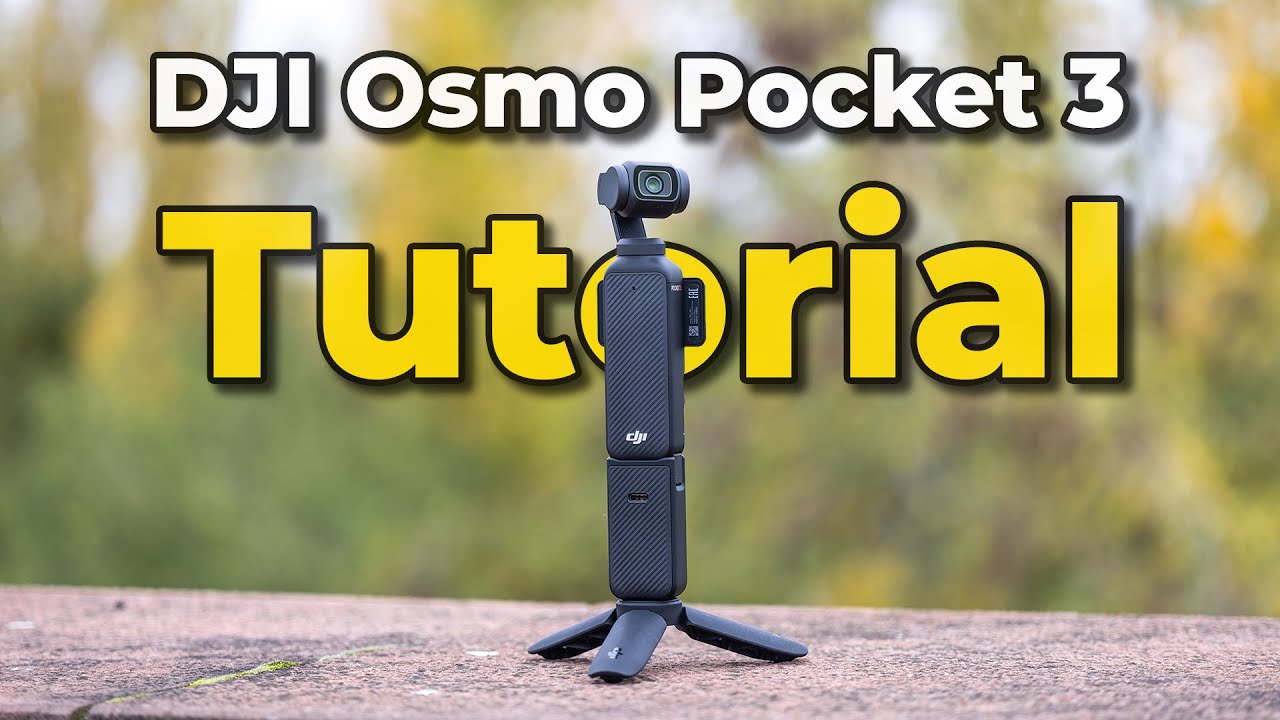The Easy Way to Design Top Tier Websites
Summary
TLDRIn diesem Video lernen Sie die wichtigsten Designprinzipien und praktischen Tipps zum Erstellen erstklassiger Websites kennen. Kreativität ist ein Prozess, kein Moment. Gute Designer kombinieren bestehende Ideen auf einzigartige Weise. Regel Nummer eins: Gutes Design ist so wenig Design wie möglich. Verwenden Sie die Gesetze der Ähnlichkeit und Nähe, um das Design zu vereinfachen. Elemente benötigen mehr Abstand als gedacht. Nutzen Sie ein Designsystem und betonen Sie wichtige Elemente mit Hierarchie. Kreativität entsteht durch Verständnis der Grundlagen und das Sammeln von Inspiration. Schließlich, testen und optimieren Sie Ihr Design basierend auf Feedback.
Takeaways
- 🎨 Kreativität ist ein Prozess, der darauf abzielt, Ideen zu verbinden, anstatt völlig neue zu schaffen.
- 🎯 Regel Nummer eins: Gutes Design ist so wenig Design wie möglich – Fokus auf essentielle Funktionen und Vermeidung von Unordnung.
- 🧩 Regel Nummer zwei: Nutze das Gesetz der Ähnlichkeit und Nähe, um das Design zu vereinfachen und Gruppierungen klar zu machen.
- 📏 Regel Nummer drei: Elemente brauchen mehr Abstand, als man denkt – Beginne mit viel Raum und reduziere nach Bedarf.
- 🛠️ Regel Nummer vier: Verwende ein Designsystem, besonders bei komplexen Websites oder Apps, um Konsistenz und Effizienz zu gewährleisten.
- 🔤 Wähle einige wenige Schriftarten und Farben und setze diese als globale Variablen für Einheitlichkeit und Anpassungsfähigkeit.
- 📐 Regel Nummer fünf: Hierarchie ist entscheidend – Betone wichtige Elemente durch Größe, Gewicht und Farbe.
- 🌈 Nutze Farben, Schatten und Akzentfarben, um wichtige Elemente hervorzuheben und Tiefe zu schaffen.
- 📚 Lerne die Grundlagen und finde Inspirationsquellen, um Top-Websites zu gestalten.
- 🛋️ Lasse die Ideen nach der ersten Phase ruhen und komme später darauf zurück, um neue Perspektiven zu gewinnen.
Q & A
Was sind die Hauptdesignprinzipien, die im Video skizziert werden?
-Die Hauptdesignprinzipien im Video umfassen: Minimales Design, Verwendung des Gesetzes der Ähnlichkeit und Nähe, ausreichend Abstand zwischen Elementen, Nutzung eines Designsystems und Schaffung einer klaren Hierarchie.
Was bedeutet es, 'gutes Design ist so wenig Design wie möglich'?
-Dies bedeutet, dass man sich auf die wesentlichen Funktionen konzentrieren sollte und diese besser und nützlicher für die Benutzer macht, ohne unnötige Elemente hinzuzufügen, die die Benutzer frustrieren oder das Design unansprechend machen.
Wie kann man das Gesetz der Ähnlichkeit und Nähe im Design anwenden?
-Man kann das Gesetz der Ähnlichkeit und Nähe anwenden, indem man Form, Größe, Farbe und Abstand verwendet, um Elemente zu gruppieren und das menschliche Gehirn dabei zu unterstützen, Muster und Ganzes schneller als Einzelteile zu erkennen.
Warum ist es wichtig, beim Design mehr Abstand zwischen den Elementen als gedacht zu lassen?
-Es ist wichtig, mehr Abstand zu lassen, weil Benutzer die gesamte Benutzeroberfläche (UI) überfliegen, bevor sie sich auf einzelne Elemente konzentrieren. Ein ausreichender Abstand erleichtert die Fokussierung auf wichtige Elemente.
Was ist ein Designsystem und warum ist es wichtig?
-Ein Designsystem ist eine Sammlung von grundlegenden Elementen und Komponenten, die für die Erstellung konsistenter Designs verwendet werden. Es ist wichtig, um eine einheitliche Benutzererfahrung und die Effizienz im Designprozess zu gewährleisten.
Wie kann man einen effektiven Abstand in einem Designsystem festlegen?
-Man kann einen effektiven Abstand festlegen, indem man Werte in einem System definiert, das durch Vier teilbar ist, und diese Werte dann als Variablen im Design verwendet, um schnell verschiedene Optionen auszuprobieren.
Welche Rolle spielt die Hierarchie im Webdesign?
-Die Hierarchie spielt eine entscheidende Rolle im Webdesign, da sie bestimmte Elemente auf der Seite hervorhebt, um Benutzern beim Navigieren und Finden wichtiger Aktionen zu helfen.
Wie kann man einen Element im Design hervorheben?
-Man kann ein Element im Design hervorheben, indem man Größe, Gewicht und Farbe verwendet, um den Kontrast zu anderen Elementen zu erhöhen und die Aufmerksamkeit des Benutzers auf das Element zu lenken.
Was sind einige Tipps, um die Lesbarkeit von Text in einem Design zu verbessern?
-Um die Lesbarkeit zu verbessern, sollte man eine geeignete Zeilenhöhe verwenden, die inverser proportional zur Schriftgröße ist, um eine bessere Lesbarkeit für kleinere Schriftgrößen zu gewährleisten.
Wie kann man die Kreativität im Designprozess fördern?
-Kreativität kann gefördert werden, indem man sich mit den Grundlagen vertraut macht, Inspiration aus anderen Designs und Quellen zieht, die Kreativität als einen Prozess und nicht als einen Moment betrachtet und sich Zeit für die Ideenfindung und das Abkochen der Ideen nimmt.
Was ist der Vorteil des Verwendens von REM-Einheiten für Schriftgrößen und Abstände?
-Die Verwendung von REM-Einheiten ermöglicht es, die Designanpassung an die Benutzersystemeinstellungen zu erleichtern, da sie relativ zur Schriftgröße des Benutzers sind und somit eine bessere Responsiveness gewährleisten.
Outlines

Dieser Bereich ist nur für Premium-Benutzer verfügbar. Bitte führen Sie ein Upgrade durch, um auf diesen Abschnitt zuzugreifen.
Upgrade durchführenMindmap

Dieser Bereich ist nur für Premium-Benutzer verfügbar. Bitte führen Sie ein Upgrade durch, um auf diesen Abschnitt zuzugreifen.
Upgrade durchführenKeywords

Dieser Bereich ist nur für Premium-Benutzer verfügbar. Bitte führen Sie ein Upgrade durch, um auf diesen Abschnitt zuzugreifen.
Upgrade durchführenHighlights

Dieser Bereich ist nur für Premium-Benutzer verfügbar. Bitte führen Sie ein Upgrade durch, um auf diesen Abschnitt zuzugreifen.
Upgrade durchführenTranscripts

Dieser Bereich ist nur für Premium-Benutzer verfügbar. Bitte führen Sie ein Upgrade durch, um auf diesen Abschnitt zuzugreifen.
Upgrade durchführenWeitere ähnliche Videos ansehen

Supervised vs Unsupervised vs Reinforcement Learning | Machine Learning Tutorial | Simplilearn

Operatoren Teil 1 - Java Tutorial 5

UiPath Studio - Basic Concepts

Your email marketing options

#01 RUKON Klima Tutorial - Erste Schritte

DJI Osmo Pocket 3 für Anfänger - einfach erklärt mit Beispielen

5 konkrete Use Cases für NotebookLM | KI-Tagebuch Vol. 5
5.0 / 5 (0 votes)